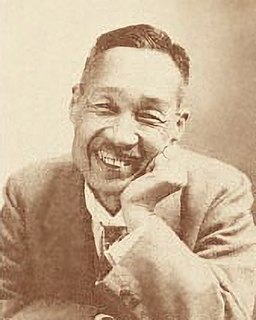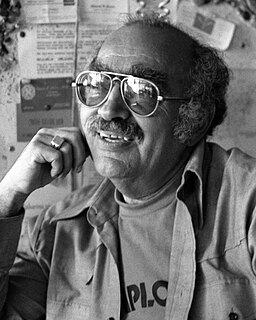Related Research Articles

Masatake Morita, also read as Shōma Morita, was a contemporary of Sigmund Freud and the founder of Morita therapy, a branch of clinical psychology strongly influenced by Zen Buddhism. In his capacity as the head of psychiatry for a large Tokyo hospital, Morita began developing his methods while working with sufferers of shinkeishitsu, or anxiety disorders with a hypochondriac base.

Gestalt psychology, gestaltism or configurationism is a school of psychology that emerged in the early twentieth century in Austria and Germany as a theory of perception that was a rejection of basic principles of Wilhelm Wundt's and Edward Titchener's elementalist and structuralist psychology.
In logic and linguistics, a proposition is the meaning of a declarative sentence. In philosophy, "meaning" is understood to be a non-linguistic entity which is shared by all sentences with the same meaning. Equivalently, a proposition is the non-linguistic bearer of truth or falsity which makes any sentence that expresses it either true or false.

Friedrich (Frederick) Salomon Perls, better known as Fritz Perls, was a German-born psychiatrist, psychoanalyst and psychotherapist. Perls coined the term 'Gestalt therapy' to identify the form of psychotherapy that he developed with his wife, Laura Perls, in the 1940s and 1950s. Perls became associated with the Esalen Institute in 1964, and he lived there until 1969.

Richard Wayne Bandler is an American author and consultant in the field of self-help. With John Grinder, he founded the neuro-linguistic programming (NLP) approach to psychotherapy in the 1970s.
Emotivism is a meta-ethical view that claims that ethical sentences do not express propositions but emotional attitudes. Hence, it is colloquially known as the hurrah/boo theory. Influenced by the growth of analytic philosophy and logical positivism in the 20th century, the theory was stated vividly by A. J. Ayer in his 1936 book Language, Truth and Logic, but its development owes more to C. L. Stevenson.
A propositional attitude is a mental state held by an agent toward a proposition.
Gestalt theoretical psychotherapy is a method of psychotherapy based strictly on Gestalt psychology. Its origins go back to the 1920s when Gestalt psychology founder Max Wertheimer, Kurt Lewin and their colleagues and students started to apply the holistic and systems theoretical Gestalt psychology concepts in the field of psychopathology and clinical psychology Many developments in psychotherapy in the following decades drew from these early beginnings, like e.g. group psychoanalysis, Gestalt therapy, or Katathym-imaginative Psychotherapy. In Europe Gestalt theoretical psychotherapy in its own right has been initiated and formulated on this basis by the German Gestalt psychologist and psychotherapist Hans-Jürgen P. Walter and his colleagues in Germany and Austria. Walter, a student of Gestalt psychologist Friedrich Hoeth, was influenced to form the core of his theoretical concept on the basis of the work of Gestalt theorists Max Wertheimer, Wolfgang Köhler, Kurt Koffka, Kurt Lewin, and Wolfgang Metzger. Walter's first publication on Gestalt theoretical psychotherapy came out in 1977 Gestalttheorie und Psychotherapie, which is now on its third edition (1994). The majority of the extensive literature on Gestalt theoretical psychotherapy which has been published in the decades since then is in the German language. However, in 2021, the international multidisciplinary journal "Gestalt Theory" published an issue focusing on Gestalt Theoretical Psychotherapy, offering a series of articles in English on the essentials of this method.
Gestalt therapy is a form of psychotherapy which emphasizes personal responsibility and focuses on the individual's experience in the present moment, the therapist–client relationship, the environmental and social contexts of a person's life, and the self-regulating adjustments people make as a result of their overall situation. It was developed by Fritz Perls, Laura Perls and Paul Goodman in the 1940s and 1950s, and was first described in the 1951 book Gestalt Therapy.
Ethical subjectivism or moral non-objectivism is the meta-ethical view which claims that:
- Ethical sentences express propositions.
- Some such propositions are true.
- The truth or falsity of such propositions is ineliminably dependent on the attitudes of people.
Barry Stevens (1902–1985) was a writer and Gestalt therapist. She developed her own form of Gestalt therapy body work, based on the awareness of body processes. For the Human Potential Movement of the 1970s, she became a kind of "star", but she always refused to accept that role.
Introjection is a psychology term that describes the human tendency to imitate others. It refers specifically to the subconscious adoption of the thoughts or personality traits of others who seem more capable.
Ralph Franklin Hefferline was a psychology professor at Columbia University.
Self-actualization, in Maslow's hierarchy of needs, is the highest level of psychological development, where personal potential is fully realized after basic bodily and ego needs have been fulfilled.

James Solomon Simkin (1919–1984) was an early seminal figure in the history of Gestalt Therapy.
Violet Solomon Oaklander was a child and adolescent therapist known for her method of integrating Gestalt Therapy theory and practice with play therapy.

Mary Henle was an American psychologist who's known most notably for her contributions to Gestalt Psychology and for her involvement in the American Psychological Association. Henle also taught at the New School of Social Research in New York; she was involved in the writing of eight book publications and also helped develop the first psychology laboratory manual in 1948 based on the famous works of Kurt Lewin.

Gestalt Therapy is a 1951 book that outlines an extension to psychotherapy, known as gestalt therapy, written by Frederick Perls, Ralph Hefferline, and Paul Goodman. Presented in two parts, the first introduces psychotherapeutic self-help exercises, and the second presents a theory of personality development and growth.

Joseph Chaim Zinker is a therapist who has contributed to the growth and development of Gestalt theory and also Gestalt methodology. He co-founded the Gestalt Institute of Cleveland.
Miriam Polster was a clinical psychologist who was raised in Cleveland, Ohio, United States of America. Polster had an interest in music, which happened to be her undergraduate major and a subject she integrated into her work. Once reaching graduate school, she became an advocate for Gestalt therapy; a therapy aimed towards self-awareness. Polster was the co-founder of The Gestalt Training Centre. Polster was the co-author of two novels, and the sole author of Eve’s Daughters. Miriam Polster died due to cancer, in 2001.
References
- ↑ Example of an individual omitting the last line
- ↑ Another example from a 1970s poster
- ↑ Dolliver, Robert H. (January 1981). "Reflections on Fritz Perls's Gestalt Prayer". Personnel and Guidance Journal. 59 (5): 311–13. doi:10.1002/j.2164-4918.1981.tb00556.x . Retrieved 2007-08-31.
- ↑ Crocker, S. F. (1983). "Truth and foolishness in the 'gestalt prayer'". The Gestalt Journal. 6 (1): 4–16.
- ↑ Cadwallader, Eva H. (July 1984). "Values in Fritz Perls's Gestalt Therapy: On the Dangers of Half-Truths". Counseling and Values. 28 (4): 192–201. doi:10.1002/j.2161-007x.1984.tb00669.x.